
| What is Flavor and Fortune? |
| How do I subscribe? |
| How do I get past issues? |
| How do I advertise? |
| How do I contact the editor? |
Read 12749192 times
Connect me to:
| Home |
| Articles |
| Book reviews |
| Letters to the Editor |
| Newmans News and Notes |
| Recipes |
| Restaurant reviews |
| Article Index (all years, slow) |
| List of Article Years |
| Article Index (2025) |
| Article Index (last 2 years) |
| Things others say |
| Related Links |
| Log In... |
| Authors |
| Categories & Topics |
Tea Harvest Seasons: In China and Taiwan
| by Mary Lou Heiss |
Beverages
Spring Volume: 2010 Issue: 17(2) page(s): 5, 6, and 7
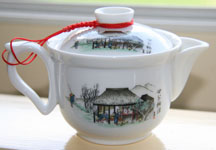 Tea knowledge and tea education today is reaching new heights in the west. The selection of premium and artisanal teas available from China and Taiwan seems to increase daily, and the information and conversation about tea is becoming more refined and in greater depth.
Tea knowledge and tea education today is reaching new heights in the west. The selection of premium and artisanal teas available from China and Taiwan seems to increase daily, and the information and conversation about tea is becoming more refined and in greater depth.
Not so long ago, tea was only available in teabags and it was simply designated as being 'green' or 'black.' Information on a box of tea conveyed only the most generic designation or place of origin. Happily, tea enthusiasts today are being introduced to and educated about the myriad taste and flavor details unique to whole-leaf teas, the complexity of tea cultivation, tea manufacture, and the differences between teas in the six classes of tea from white to pu-er.
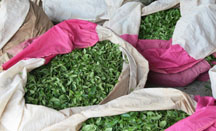 For me, everything about Chinese and Taiwanese tea is interesting. As a tea specialist, one facet of importance that I find often overlooked by others when discussing tea is seasonality. Everyone is concerned about 'freshness' but I wonder what most people mean when they ask if a tea is 'fresh?'
For me, everything about Chinese and Taiwanese tea is interesting. As a tea specialist, one facet of importance that I find often overlooked by others when discussing tea is seasonality. Everyone is concerned about 'freshness' but I wonder what most people mean when they ask if a tea is 'fresh?'
Many who drink tea, even those who are life-long tea drinkers, do not realize that whether classified as a green, yellow, white, oolong, black, or a pu-er tea, that the best in its class is made only at a certain time or times of the year. Each tea has a season in which it is at its glorious best. Teas that are made in two seasons of the same year will have similar but different flavor, aroma, and style characteristics. Tea enthusiasts who know the differences are able to choose more wisely.
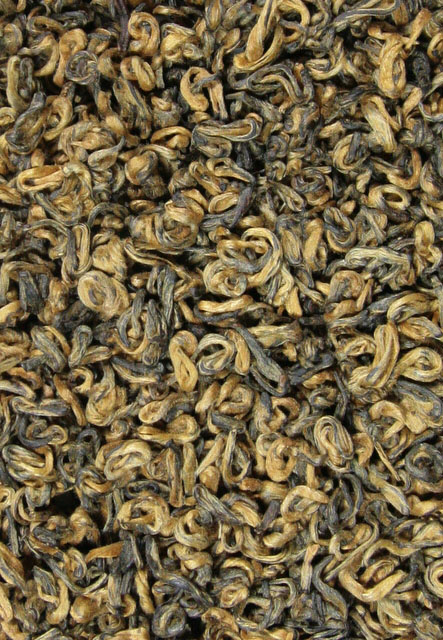 For some teas, the entire yearly pluck of fresh leaf may be fleeting, its production lasting for only a few days. The production time for other teas may stretch over a one week period or into several weeks. For example, production of China's esteemed Keemun Mao Feng black tea from the Anhui Province and Kai Hua Long Ding green tea from the Zhejiang Province occurs only once a year. A tea merchant may receive numerous shipments of either of these teas throughout the year but all the tea will be from the same harvest because each of these teas are made just once a year. No new Keemun Mao Feng or Kai Hua Long Ding tea can be made until the spring season of the following year. Nature has all this figured out pretty well. Most tea has a one year shelf life and it is considered fresh until new harvest teas become available.
For some teas, the entire yearly pluck of fresh leaf may be fleeting, its production lasting for only a few days. The production time for other teas may stretch over a one week period or into several weeks. For example, production of China's esteemed Keemun Mao Feng black tea from the Anhui Province and Kai Hua Long Ding green tea from the Zhejiang Province occurs only once a year. A tea merchant may receive numerous shipments of either of these teas throughout the year but all the tea will be from the same harvest because each of these teas are made just once a year. No new Keemun Mao Feng or Kai Hua Long Ding tea can be made until the spring season of the following year. Nature has all this figured out pretty well. Most tea has a one year shelf life and it is considered fresh until new harvest teas become available.
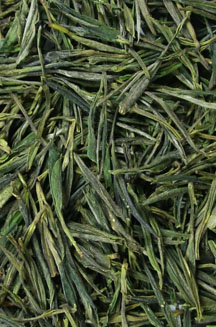 So when our customers ask us if a tea is 'fresh,' we respond with an enthusiastic 'yes' but also with information about when the tea was plucked and when it will be plucked again. We try to underscore the idea of the natural cycle of the yearly agricultural calendar as it pertains to the production of premium tea. Seasonal tea plucking and tea manufacture in China and Taiwan follow dates of their lunar calendar. Once tea enthusiasts become familiar with the various timeframes and seasons, the question then changes from: 'Is this tea fresh?' to the more appropriate question: 'Is this tea from the most current harvest?'
So when our customers ask us if a tea is 'fresh,' we respond with an enthusiastic 'yes' but also with information about when the tea was plucked and when it will be plucked again. We try to underscore the idea of the natural cycle of the yearly agricultural calendar as it pertains to the production of premium tea. Seasonal tea plucking and tea manufacture in China and Taiwan follow dates of their lunar calendar. Once tea enthusiasts become familiar with the various timeframes and seasons, the question then changes from: 'Is this tea fresh?' to the more appropriate question: 'Is this tea from the most current harvest?'
CHINA HAS THREE TEA SEASONS: They are listed below followed by teas made in each season; the three distinct tea-plucking seasons are: Spring, Summer, and Fall.
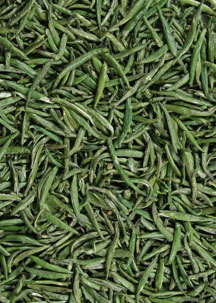 SPRING is the most abundant season for premium teas. They are categorized by the four plucking times of: 1) Pre-Qing Ming (Feb-April 5th ) with pre-Qing Ming black tea and pre-Qing Ming green tea; 2) Before the Rains ( between April 5th and April 20th) with yellow tea, white tea, and spring green teas; 3) Spring (April 20th to May 6th) with green tea, yellow tea, white tea, oolong tea, and pu-er tea; and 4) Late spring: ( May 6th to May 21st ) with green tea, oolong tea, and pu-er tea.
SPRING is the most abundant season for premium teas. They are categorized by the four plucking times of: 1) Pre-Qing Ming (Feb-April 5th ) with pre-Qing Ming black tea and pre-Qing Ming green tea; 2) Before the Rains ( between April 5th and April 20th) with yellow tea, white tea, and spring green teas; 3) Spring (April 20th to May 6th) with green tea, yellow tea, white tea, oolong tea, and pu-er tea; and 4) Late spring: ( May 6th to May 21st ) with green tea, oolong tea, and pu-er tea.
SUMMER is the most abundant season for standard black, green and oolong teas.
FALL is the second most abundant season for oolongs and some pu-er teas. In high elevation tea gardens of China, the arrival of Fall brings cool weather signaling the tea bushes to suspend growth. As Fall progresses into Winter, the plants rest and recharge their energies as the landscape slows and nature slumbers under the icy grip of Winter.
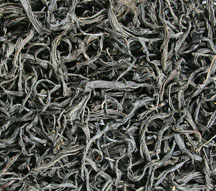 During this dormant period, tea plants concentrate on storing energy in their roots which are spread deep into the earth below. This stored reserve of energy will be necessary for the tea bushes once the slumber of Winter is broken by the Spring thaw and growth begins again above ground. As the ground temperature rises and the air warms, the plants awaken and leaf production starts anew.
During this dormant period, tea plants concentrate on storing energy in their roots which are spread deep into the earth below. This stored reserve of energy will be necessary for the tea bushes once the slumber of Winter is broken by the Spring thaw and growth begins again above ground. As the ground temperature rises and the air warms, the plants awaken and leaf production starts anew.
Spring is the time when China's spring green, yellow and white teas are made, as well as premium black and oolong teas. Asian tea enthusiasts believe that the earlier the pluck, the better the tea. Anticipation runs high among tea lovers as the first new teas of the Spring season begin to reach tea shops and markets.
These Spring teas are harvested in China from April 5th to approximately mid-May the earlier the better. Each of these teas is highly prized by tea enthusiasts because of their fresh, vibrant flavor, youthful tenderness, and high quotient of antioxidants present in the new leaf.
GREEN TEA: Spring is the most important tea cropping season of the year in China. It is the time for production of tender and delicious green teas. These Spring teas comprise roughly ten percent of China's annual green tea harvest. Green teas represent approximately seventy percent of this country's annual output of tea. The amount of premium Spring green tea made each year is small.
The emergence of the first tiny leaf buds in early spring is known as 'budbreak' and it is a joyous time in the tea villages. As the Spring season regains the upper hand over departing Winter, tea bushes begin to 'flush' with color and the plant juices begin to circulate throughout the stems and leaves of the plant in advance of new leaf growth.
The earliest Spring teas are known as 'pre-Qing Ming' teas or 'Ming Qian' signifying that the tea was plucked at the earliest time possible and before April 5th, the date of the annual Qing Ming Festival. By the end of May, production of the Spring teas will have ceased and the Summer harvest will be about to start.
Pre-Qing Ming teas can be plucked as early as the end of February or very early March (depending on the location of the tea gardens); these are comprised of thousands of slender and perfectly formed tiny tea buds. In a sense these teas are made from baby tea leaves that are delicious 'just born' expressions of flavor of the tea. These teas are vigorous and bursting with flavor; they also contain the largest amount of beneficial plant nutrient that the tea plant will contain for the forthcoming year.
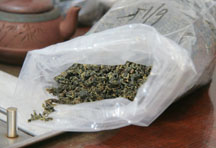 Both leaf and bud are plucked for Chinese teas. The universal plucking standard for premium teas is to pluck a leaf configuration that is comprised of 'two leaves and a bud.' While this plucking standard is followed in China, many of the finest green, white, yellow and black teas feature a single young spring bud or the bud and one leaf or one single leaf.
Both leaf and bud are plucked for Chinese teas. The universal plucking standard for premium teas is to pluck a leaf configuration that is comprised of 'two leaves and a bud.' While this plucking standard is followed in China, many of the finest green, white, yellow and black teas feature a single young spring bud or the bud and one leaf or one single leaf.
In just a few weeks time, the leaves on the tea bushes will have grown too large to be these baby tea leaves any longer. The next leaf plucking will produce 'Before the Rains' or yu qian teas. These in turn will be followed by what is collectively called 'Spring Tea' or gu yu. These three markers in the agricultural calendar yield the most distinctive and sweetest green teas.
As Summer arrives, the once tiny leaves quickly grow into full-sized leaves. They will be plucked to make the 'Late Spring' or lia xia and 'Summer' green teas. China's Summer tea crop is important as a cash crop for export to tea packers and blenders around the world and for local consumption, but Summer does not produce China's treasured premium quality tea.
YELLOW AND WHITE TEA: China produces less than a handful of yellow teas, and they are all made during the early Spring season. White teas, too, begin production approximately March 15th. Bai hao yin zhen is China's famous bud white tea and the first new white tea to be made each year. It is followed by production of the modern style leafy white teas. All white tea production is over each year by the end of May.
BLACK TEA: China's best black teas are made during Spring and Fall. A few extremely delicious pre-Qing Ming black teas are made in southern Yunnan Province in the Xishuangbanna region from fat, lush, first of the season new tea buds. The semi-tropical weather in this colorful and historic tea-producing region brings an early start to the tea harvest. China's premium black teas are made in Spring and again in the Fall. Spring teas are small in size and made from fresh leaf that yields thin, slender teas, such as the fancy Keemun teas. Fall black teas are thicker in size and earthier in taste
Oolong Tea: These teas are made in late Spring and production continues thru Summer and into the Fall. The best oolong teas are made from Spring and Fall crops when both aroma and flavor will be high.
OOLONG TEAS: These teas fall into two distinct styles by shape; they are traditional strip-style and modern semi-ball-rolled style. To properly give oolong tea its requisite appearance, tea makers need to work with fresh leaf that is larger in size than that which is desirable for making fine, premium green teas. The plucking standards differ for different styles of oolong. For strip-style teas the leaf is one large single leaf. For semi-ball-rolled style oolongs, the leaf is a cluster configuration of three or more leaves, often with stem attached.
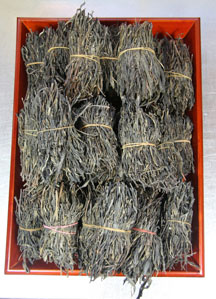 PU-ER TEAS: Pu-er Tea is made from the leaf of old tea trees, many of which are several hundred years old, and from offspring tea trees and tea bushes of varying ages. By late Spring, the leaf from the old tea trees has grown sufficiently large and tasty. In the old tea forests of Xishuangbanna and other surrounding pu-er-producing regions, fresh leaf is used to make intriguing pu-er cakes and also loose leaf versions of this famous fermented tea. Pu-er is made in two versions: 'sheng' or the style of pu-er made for keeping and aging, and 'shou' with accelerated fermentation created for ready drinking. Tea cakes that are made from the choicest spring leaves are the most desirable.
PU-ER TEAS: Pu-er Tea is made from the leaf of old tea trees, many of which are several hundred years old, and from offspring tea trees and tea bushes of varying ages. By late Spring, the leaf from the old tea trees has grown sufficiently large and tasty. In the old tea forests of Xishuangbanna and other surrounding pu-er-producing regions, fresh leaf is used to make intriguing pu-er cakes and also loose leaf versions of this famous fermented tea. Pu-er is made in two versions: 'sheng' or the style of pu-er made for keeping and aging, and 'shou' with accelerated fermentation created for ready drinking. Tea cakes that are made from the choicest spring leaves are the most desirable.
TAIWAN HAS FOUR TEA SEASONS: They follow a similar pattern to that of neighboring China but also include the addition of a fourth pluck in the early Winter in some regions. Taiwan has nearly perfect weather for oolong tea production and tea makers there create glorious oolongs in several different shapes, styles and flavors. The diversity of oolong teas from Taiwan is truly astonishing; the level of excellence that the tea industry as a whole achieves is to be respected. Taiwan's small tea farmers produce some of the world’s most delicious (and expensive ) hand-plucked and hand-rolled oolong teas. Knowledgeable tea enthusiasts place their names on sell-lists and on waiting-lists with tea farmers for their favorite seasonal teas.
As the seasons of the year progress in Taiwan, the leaf changes in nature and size; and while one tea finishes production for the year, another one is just beginning. Different oolong teas appear in the market throughout the year, creating an ever-changing selection of seasonal offerings.
TAIWAN'S FOUR TEA SEASONS: These are below followed by teas made in each season. They are 1) Spring with leafy oolong and semi-ball-rolled oolong teas; 2) Summer with standard grade oolong teas; 3) Fall with its semi-ball-rolled oolong, and gao shan oolong teas; and 4) Winter with small quantities of gao shan oolong teas.
The first oolong teas to come to market each Spring are the leafy styles of 'Bai Hao' or Oriental Beauty, and 'Bao Zhong.' These tea plants grow in warmer climates and at lower level elevations. They are followed by the mid-elevation and high-elevation mountain-grown oolong teas such as 'Tung Ting' and then later still by the high mountain Gao Shan oolong teas from the highest tea gardens: Ali Shan, Li Shan, and Shan Lin Shi Gao Shan oolong teas can be harvested in Winter capturing a very concentrated essence of flavor in the late-harvest leaves. In New England where I live, most people I know dream all winter about the return of warm Spring weather. They look forward to preparing vegetable gardens or perfecting colorful flower beds. For me, I like to think about the fact that Spring has arrived in China and Taiwan, too. I envision tea fields and tea factories buzzing with energy and efforts of many tea workers. By now, the first of the season, fresh new teas have been made, and our orders for these new teas have been air shipped to us.
In our store, it is a time to celebrate the tea harvest and to revel in the wonderful flavor of these splendid, fresh teas. The new tea year begins again with the hopes of a bright future and a good harvest of other seasonal teas that will be coming along in the months ahead.
_____
Mary Lou Heiss, adventurous tea trekker, tea retailer, and food writer, is co-author of The Tea Enthusiast Handbook: A Guide to the World's Best Teas (2010) and co-author of The Story Of Tea: A Cultural History and Drinking Guide. The latter book was nominated for a James Beard Foundation Book Award and a 2008 IACP Cookbook Award. Both books have been reviewed by Flavor and Fortune; so you can check them out! Mary Lou can be reached at her shop: Tea Trekker in Northhampton MA, or contacted on line at: www.teatrekker.com

Copyright © 1994-2025 by ISACC, all rights reserved
Address
3 Jefferson Ferry Drive
S. Setauket NY 11720